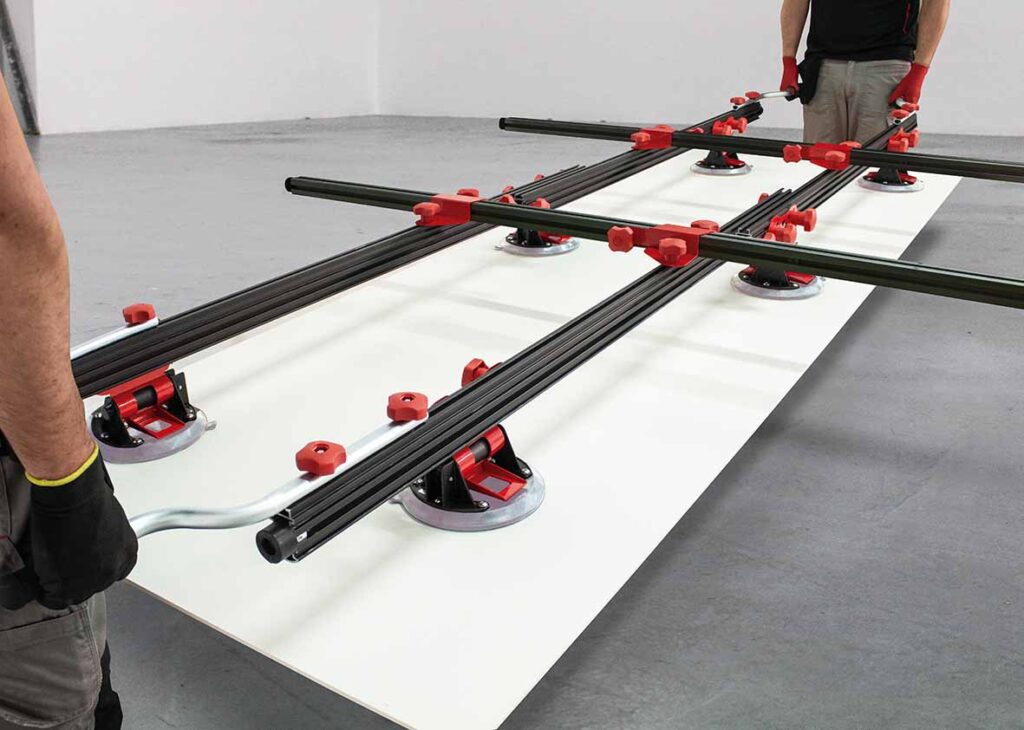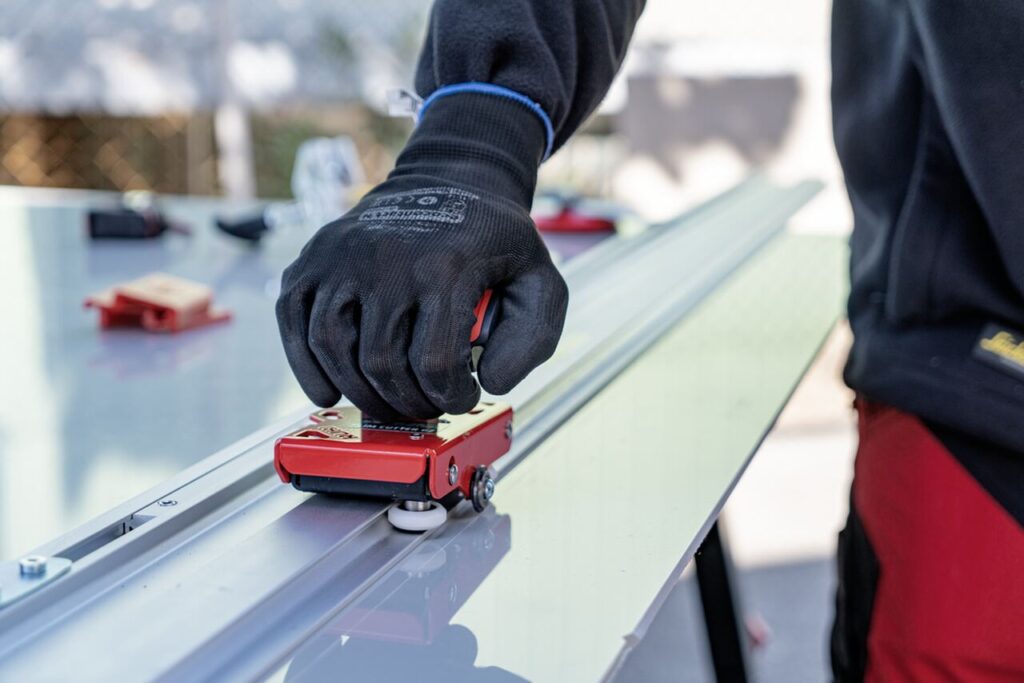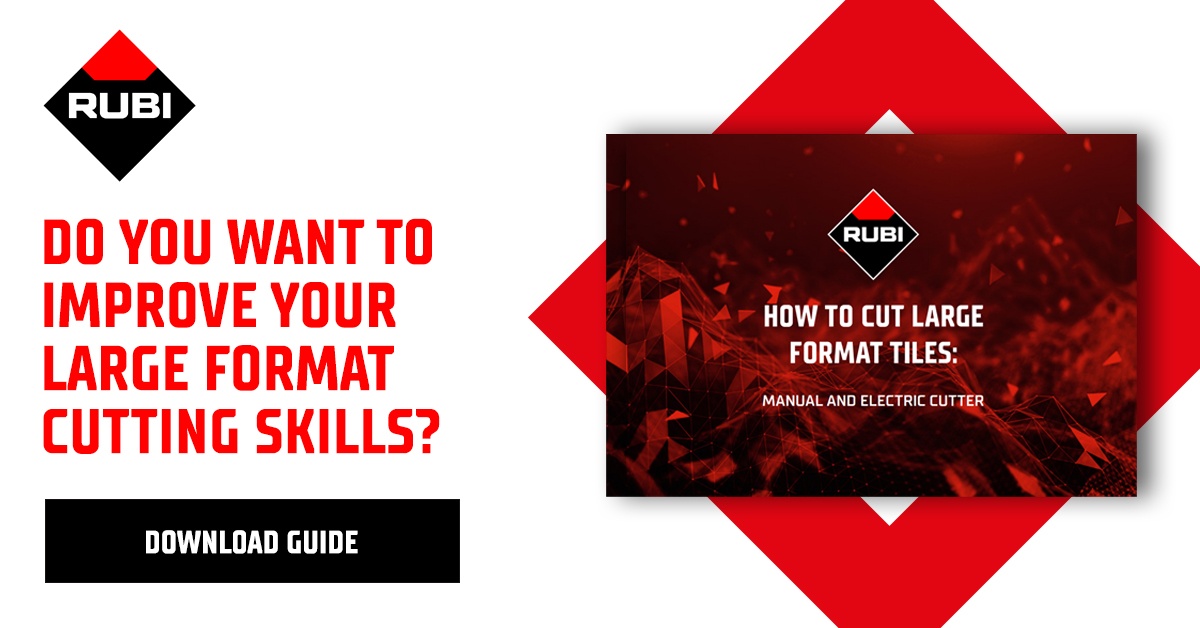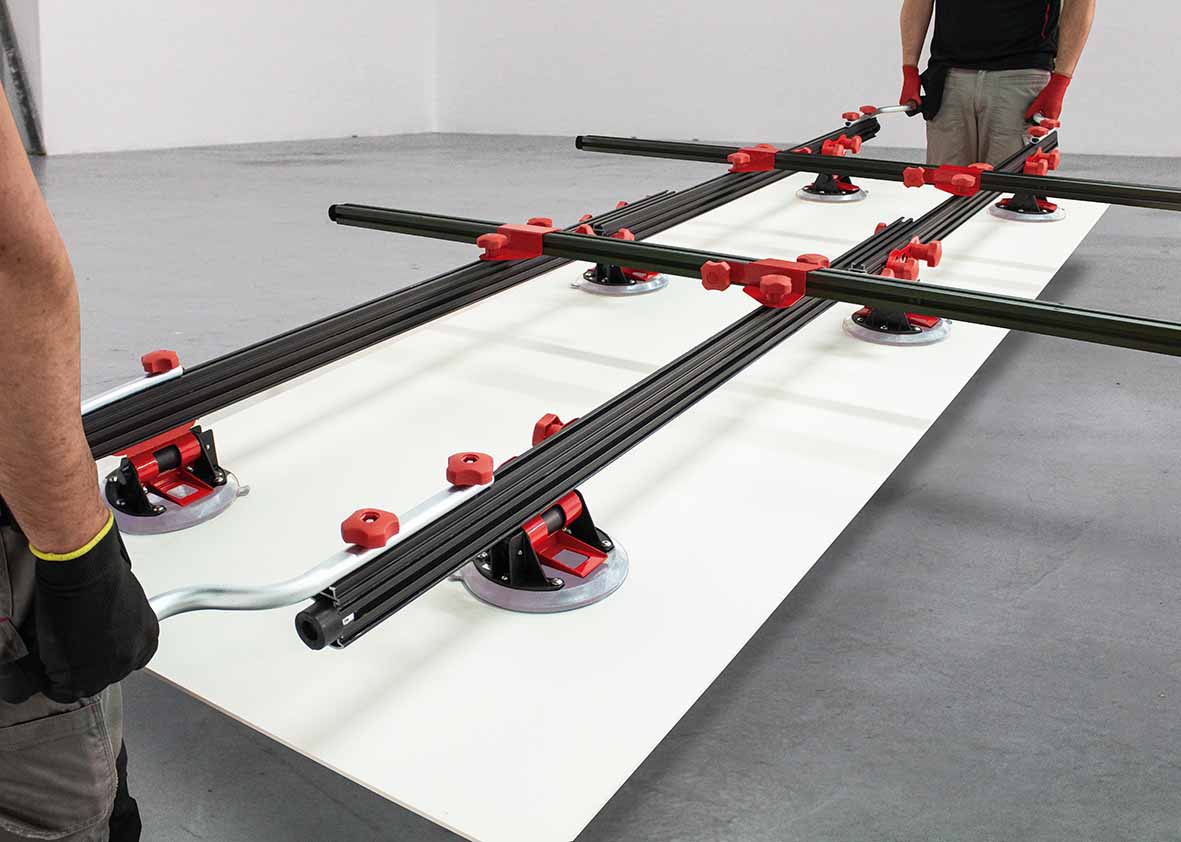Large format tiles are currently trending in the construction industry because they offer a solution that combines practicality with aesthetic or decorative goals, in both indoor and outdoor tile installations.


What is Large-Format Ceramic?
We define large-format ceramic as any tile that has one side measuring more than 40 cm. These tiles are increasingly used in the construction of all types of buildings, both new constructions and renovations. The most common formats today include 60×60, 60×120, 30×120, 120×120, and 75×150 cm, among others.
Advantages of Large-Format Ceramic
Among the advantages of large-format ceramic, we highlight the following:
- They provide a greater sense of spaciousness.
- They create a feeling of continuity.
- They offer a variety of applications.
On the other hand, while it’s true that installing each piece requires more time and effort, you cover more surface area with each piece, and the number of tiles installed is reduced. Therefore, we can add another advantage: large-format ceramic ultimately optimizes the time and resources used, which, in the end, is one of the most important factors in any construction project.
Is It Complicated to Install This Type of Ceramic?
While installing large-format ceramic is not excessively complex, it does require some adaptation to placement techniques and the tools used to handle these larger and heavier pieces with ease.


Tips for Installing Large-Format Ceramic
Following these tips can make the task much easier and help you achieve fully satisfactory results:
- Tip 1: It’s very important that the base is a stable and perfectly flat surface. If it doesn’t meet these parameters, the base will need to be conditioned.
- Tip 2: Installation is done using the double-gluing technique. That is, a thin layer of adhesive is applied to both the back of the tile and the base. Use a trowel with teeth appropriate to the size of the tile.
- Tip 3: It’s highly recommended to use suction cups, not only to place the ceramic tiles more comfortably but also to adjust their position and check the adhesion of the ceramic adhesive.
- Tip 4: To ensure a perfectly flat surface and avoid the dreaded “lips or unevenness,” a leveling system between tiles should be used to prevent movement during curing.
- Tip 5: The installation joint is more important than ever, so spacers and “T” pieces should be used. This allows you to account for small dimensional variations that some tiles may have. Additionally, this promotes curing through the joints. Using leveling systems does not eliminate the need for spacers and “T” pieces as separators.
- Tip 6: When it comes to cutting, large-format ceramic can be cut with both manual and electric cutters. However, it’s essential to ensure that the tools used are suitable for large-format tiles.
Conclusion
As mentioned earlier, the growing popularity of large-format ceramic is mainly due to its significant advantages. In many cases, these far outweigh the inconveniences related to transport and handling.



Post a comment